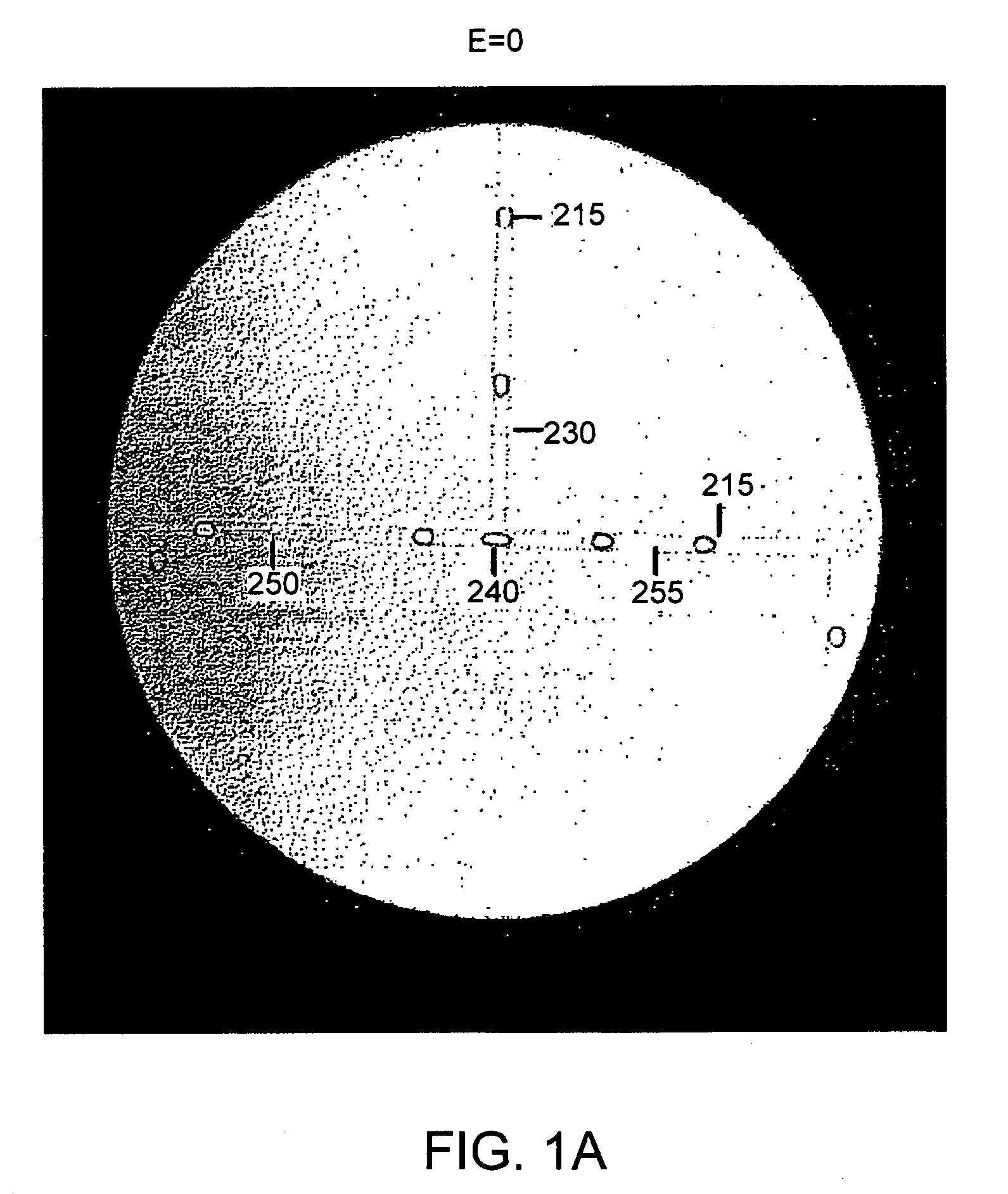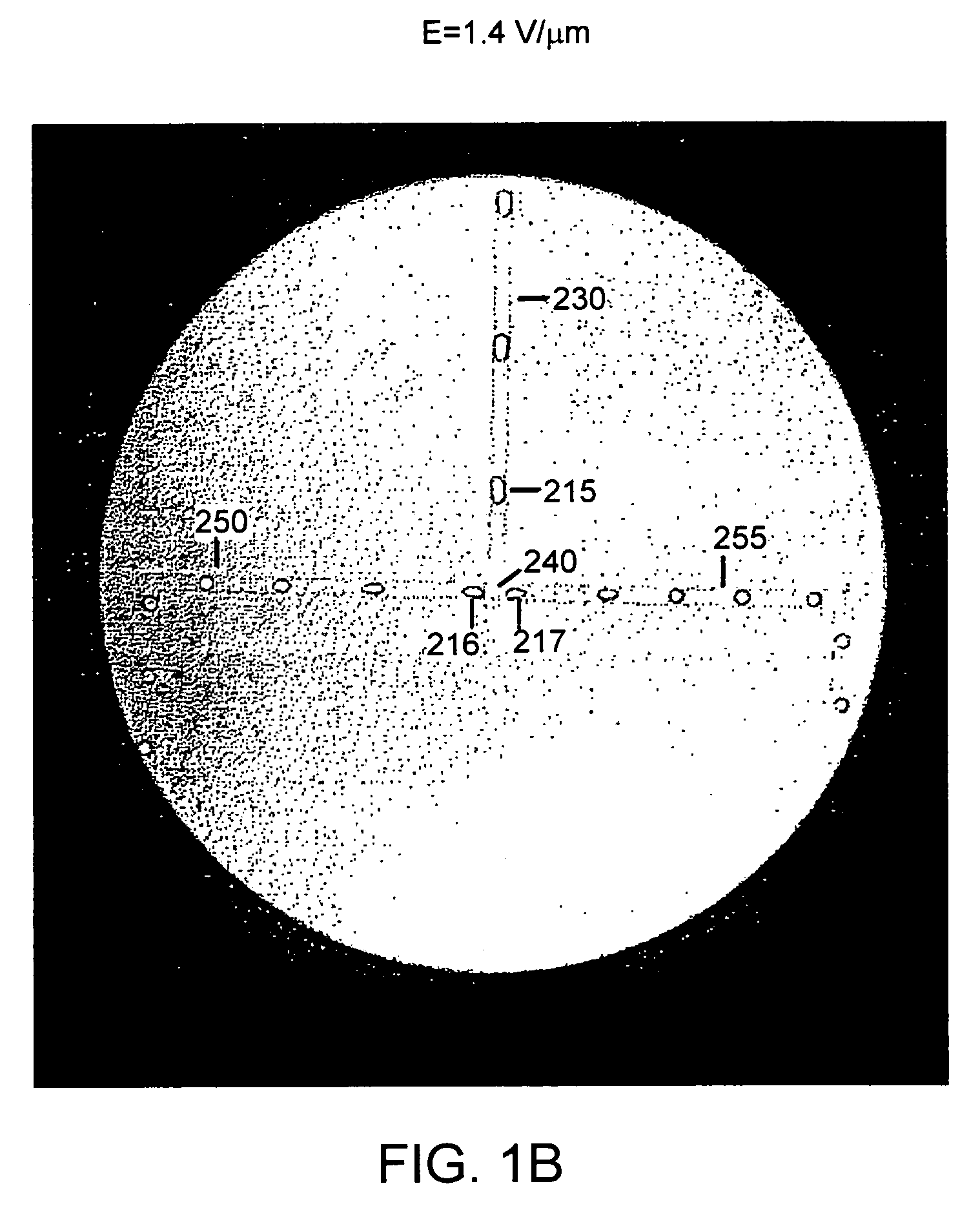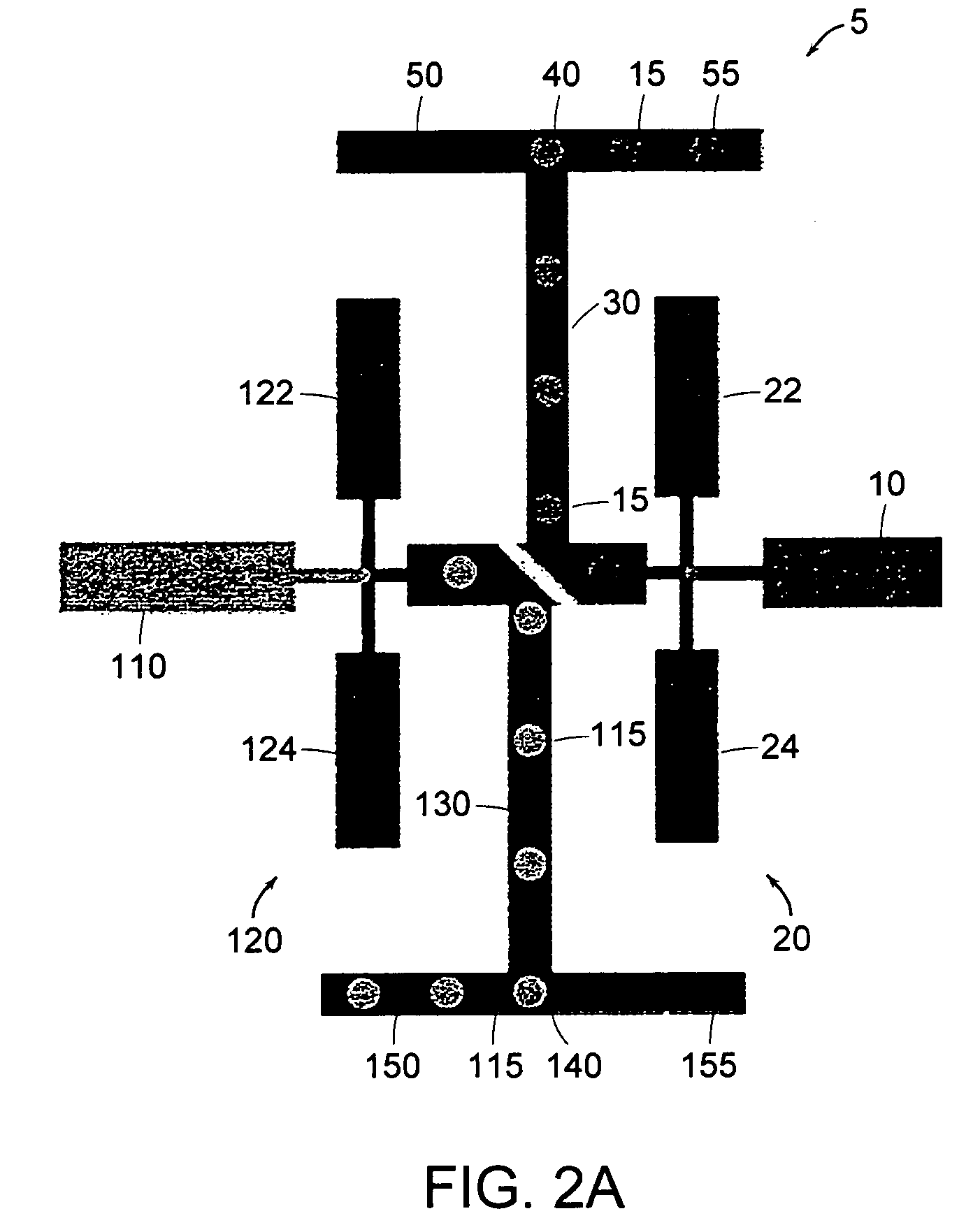Compartmentalised screening by microfluidic control
- Summary
- Abstract
- Description
- Claims
- Application Information
AI Technical Summary
Benefits of technology
Problems solved by technology
Method used
Image
Examples
example 1
Microfluidic Device for Screening Using in Vitro Compartmentalisation
[0325] A schematic representation of the microfluidic device is shown in FIG. 18. Microchannels are fabricated with rectangular cross-sections using rapid prototyping in poly(dimethylsiloxane) (PDMS) (McDonald and Whitesides, 2002) and rendered hydrophobic as (Song and Ismagilov, 2003). Syringe pumps were used to drive flows (Harvard Apparatus PHD 2000 Infusion pumps). For aqueous solutions, 250 μl Hamilton Gastight syringes (1700 series, TLL) with removeable needles of 27-gaugeare used with 30-gauge Teflon tubing (Weico Wire and Cable). For the carrier fluid, 1 ml Hamilton Gastight syringes (1700 series, TLL) are used with 30-gauge Teflon needles with one hub from Hamilton (Song and Ismagilov, 2003). The carrier fluid is 9% (v / v) C6F11C2H4OH in perfluorodecaline (PFD) (Song et al., 2003). The microfluidic device consists of a series of interconnected modules. Each module has a specific function. These include mod...
example 2
Screening for Protein Tyrosine Phosphatase 1B (PTP1B) Inhibitors Using Microcapsules in Microfluidic Systems
[0336] PTP1B is a negative regulator of insulin and leptin signal transduction. Resistance to insulin and leptin are hallmarks of type 2 diabetes mellitus and obesity and hence PTP1B is an attractive drug target for diabetes and obesity therapy (Johnson et al., 2002). Using a microfluidic device as described in Example 1, we describe how PTP1B inhibitors can be screened using microcapsules in a microfluidic system.
[0337] All water-soluble reagents are dissolved in (25 mM HEPES, pH 7.4, 125 mM NaCl, 1 mM EDTA), a buffer compatible with PTP1B activity. A solution of the target enzyme (human recombinant PTP1B, residues 1-322; Biomol Research Laboratories, Inc.) at 50 mU / ml and a solution of either a) 100 μM compound 2 (FIG. 17), which has a bis-difluoromethylene phosphonate and is a known PTP1B inhibitor (Johnson et al., 2002), or b) 100 μM hydrocinnamic acid (Aldrich), a compo...
example 3
Screening of PTP1B Inhibitors from a Compound Library
[0339] 96 aqueous mixtures are made on ice (to prevent reaction). The first mixture contains 100 μM compound 2 (FIG. 17), which has a bis-difluoromethylene phosphonate and is a known PTP1B inhibitor (Johnson et al., 2002), and a pre-defined ratio of Qdot™ Streptavidin Conjugates with emmission maxima at 585 nm, 655 nm and 705 nm (Quantum Dot Corporation, Hayward Calif.) in a buffer compatible with PTP1B activity (25 mM HEPES, pH 7.4, 125 mM NaCl, 10% glycerol, 1 mM EDTA) (Doman et al., 2002). The 95 other aqueous mixtures are identical to the above but each contain one of 95 carboxylic acids from the Carboxylic Acid Organic Building Block Library (Aldrich) in place of compound 2, and different ratios of Qdot™ Streptavidin Conjugates with emission maxima at 585 mn, 655 nm and 705 nm. In all mixtures the concentration of the 705 nm Qdot™ Streptavidin Conjugates is 100 nM, and the concentrations of the 585 nm and 655 nm Qdot™ Strept...
PUM
| Property | Measurement | Unit |
|---|---|---|
| Concentration | aaaaa | aaaaa |
| Electric charge | aaaaa | aaaaa |
| Molecular weight | aaaaa | aaaaa |
Abstract
Description
Claims
Application Information
 Login to View More
Login to View More - R&D
- Intellectual Property
- Life Sciences
- Materials
- Tech Scout
- Unparalleled Data Quality
- Higher Quality Content
- 60% Fewer Hallucinations
Browse by: Latest US Patents, China's latest patents, Technical Efficacy Thesaurus, Application Domain, Technology Topic, Popular Technical Reports.
© 2025 PatSnap. All rights reserved.Legal|Privacy policy|Modern Slavery Act Transparency Statement|Sitemap|About US| Contact US: help@patsnap.com



